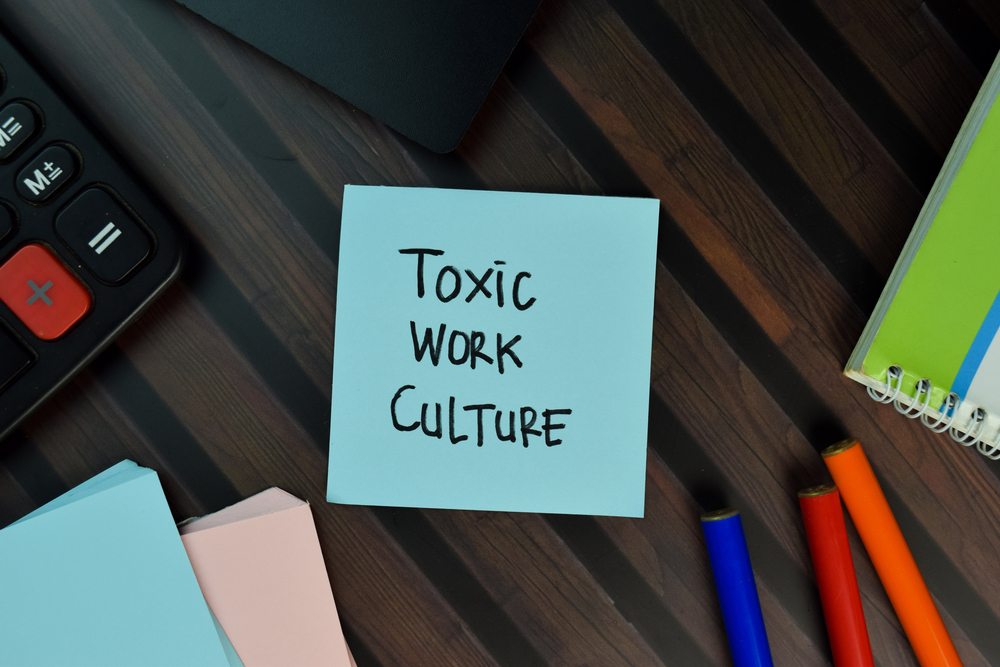
We are reading a lot about Return to Office (RTO) and how it’s critical to company culture that people get together. In fact, senior executives are telling us they are depending on it to maintain or create the culture they want. But what if your workplace culture is toxic? Does getting together help or make things worse?
The survey says…
A recent survey by the consultancy Capterra, shows something interesting. According to their survey, 70% of HR leaders say they received fewer complaints of toxic behavior since transitioning to hybrid or remote work.
At some point, this makes sense. If the reason your workplace is toxic is that you sit next to Bob (and you know how he is!) and you’re no longer sitting next to Bob, the toxic behavior has magically disappeared. Beyond that, though, there’s some interesting data in the study.
What’s the connection between remote work and lower toxicity levels?
Specifically, there are some key behaviors that many people consider toxic which seem to be positively impacted when people don’t share the same space:
- HR reports of toxic behavior at work are down significantly. This needs to be carefully interpreted, because it may mean toxic behaviors are down (nobody’s fighting over stolen yogurt from the fridge) or it may just mean that because you aren’t sharing space, and can simply mute the person and ignore them. The behavior is still there, it’s just not worth reporting.
- Employees agree that work is less toxic now: 38% of employees who have transitioned to hybrid/remote work have noticed less toxic workplace behavior compared to before the transition. Only 13% have noticed more toxic behavior. More on this in a minute.
- Bullying, racism, sexism, and gaslighting all see reductions. Well, complaints about them do anyway. Whether anything’s changed is still an open question.
- Technology is helping reduce toxic workplace behaviors. The “mute” and “out of office” buttons are powerful when wielded correctly.
It makes perfect sense that if the toxic behaviors in question stem from physical proximity (unwanted touching, locker room talk, lack of respect for private space), then the less you are together with your coworkers, the fewer of those problems emerge.
Are there other toxic behaviors emerging?
This raises another question: does working remotely create other kinds of dysfunction? Here are some of the complaints people have about their remote and hybrid co-workers:
- Disappearing from meetings and projects This includes those who abuse the “do not disturb” and “out of office” notifications to avoid interacting with teammates.
- A rise in inappropriate private messages ,chats and emails. According to SHRM, this is one of the fastest growing complaints in the workplace. You don’t have to share a cube farm to be a creep.
- Gossip and “the meeting after the meeting” are as destructive, perhaps even more so, in a virtual world where you aren’t likely to be overheard.
- Exclusion from group projects and tasks. This is particularly true in hybrid teams where people often default to their nearest coworkers, a sure sign of proximity bias
- Lack of alignment between official policy and how managers really treat people. This is going to be a very big problem on hybrid teams. “Sure, the policy is you can work from home, but if you really cared, you’d be in here.” This will (and already does) lead to accusations of favoritism and blocking career progress.
It’s undoubtedly true that there are unwelcome workplace behaviors that will diminish the less time we spend together. It’s also true that “humans are going to human,” and when the way we work changes, so will the ways we annoy and undermine each other.
If returning to the office is the right thing to do for your business, and it may well be, then have at it. But don’t expect getting together to magically remove toxic behavior.
If there were problems before everyone left to work from home, now is the time to address it and make sure the return is an improvement over how we were working before.
ABOUT THE AUTHOR
Wayne Turmel
Co-Founder and Product Line Manager
Wayne Turmel is the co-founder and Product Line Manager for the Remote Leadership Institute. For twenty years he’s been obsessed with helping managers communicate more effectively with their teams, bosses and customers. Wayne is the author of several books that demystify communicating through technology including Meet Like You Mean It – a Leader’s Guide to Painless & Productive Virtual Meetings, 10 Steps to Successful Virtual Presentations and 6 Weeks to a Great Webinar. His work appears frequently in Management-Issues.com.
Wayne, along with Kevin Eikenberry, has co-authored the definitive book on leading remotely, The Long-Distance Leader: Rules for Remarkable Remote Leadership. Wayne and Kevin’s follow-up book, The Long-Distance Teammate, offers a roadmap for success not just for leaders, but for everyone making the transition to working remotely.
The latest book from Wayne and Kevin shows leaders how to design a team culture that has a one-team mindset and gets great results under hybrid-work conditions. You can pre-order The Long-Distance Team: Designing Your Team for Everyone’s Success now.


0 comments